How ancient pyramids ended up underwater and where to see them
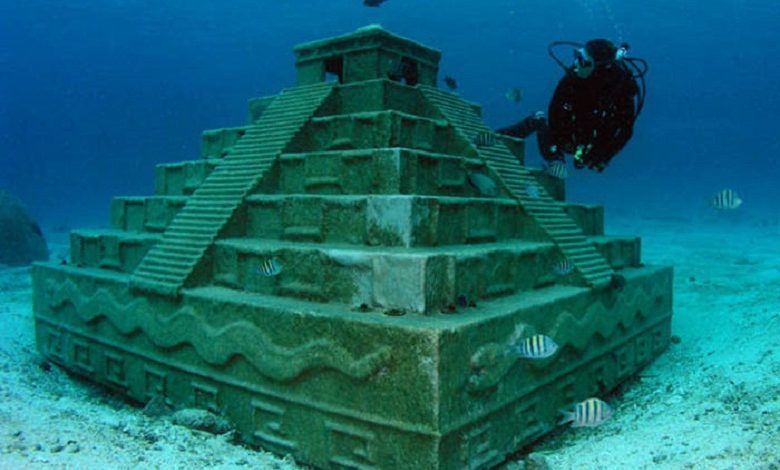
No one doubts that as a result of a large-scale flood, some of the ancient cities of the Earth went underwater, including the ancient pyramids.
But what do the giant stone pyramids built in these cities by our distant ancestors and hidden from the eyes of modern people in the water depths mean? After all, similar structures discovered by divers in seas and lakes still remain a mystery to scientists…
The Pyramids of Lake Titicaca
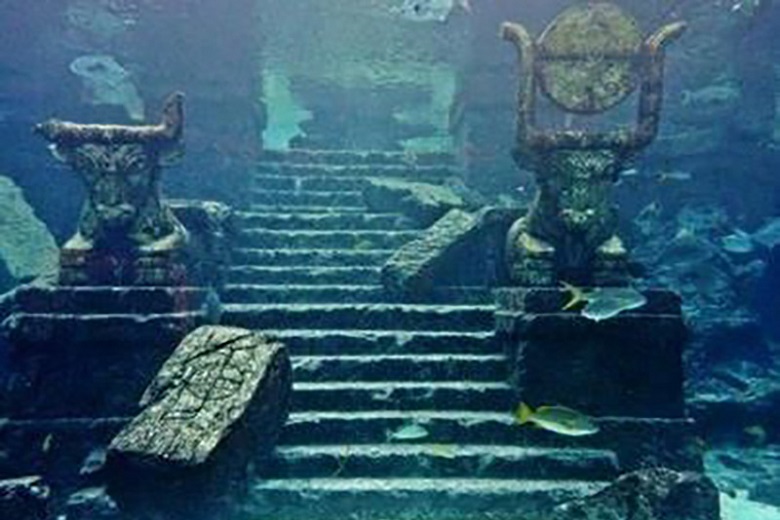
Early last century, Argentine divers spotted underwater objects at the bottom of Bolivia’s Lake Titicaca. Despite a large amount of silt that obstructed the view, the researchers determined that it was an ancient submerged city. They found walls, sculptures, roads, and something that looked like temples or pyramids at the bottom of the body of water.
One of these stone pyramids is larger than a soccer field. Their structure is very similar to the architecture of the pyramids of the ancient Incas, who, incidentally, considered this lake sacred. Now it is already known for sure that this is nothing more than an underwater city.
Rock Lake pyramids
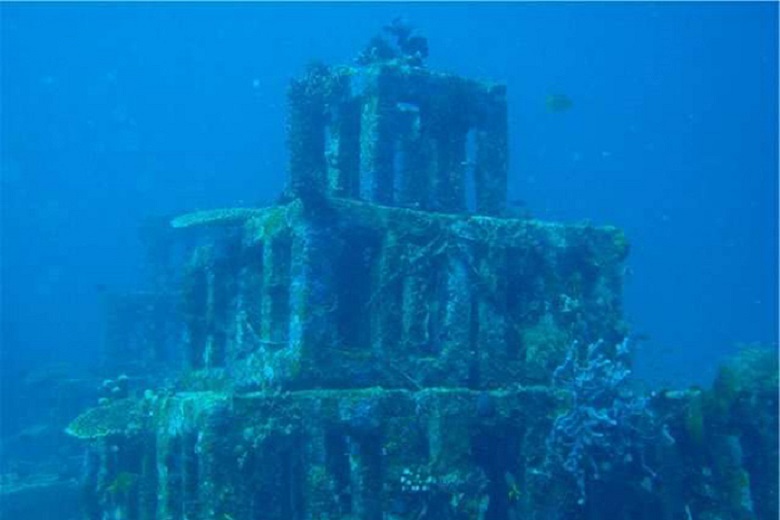
In the United States, in the depths of the vast Rock Lake, pyramids have also been discovered. First, in 1936 some obscuration through muddy, muddy water was seen by an American who was flying low over the lake on his private plane.
Thirty years later, a large expedition investigated the find and discovered more than a dozen pyramids at the bottom. They consisted of heavy stone blocks and were arranged in a semicircle, with equal distance between them.
Houses, arches, and other man-made structures have also been found at the bottom of the lake. In 2002, a diver lifted a fragment of rock from the bottom of the lake, which after drying up showed ancient writings, which look very similar to the writings of the Indians of Mexico and Guatemala. All this confirms the version about the existence of the ancient Indian civilization, which later was flooded.
Pyramids of Yonaguni
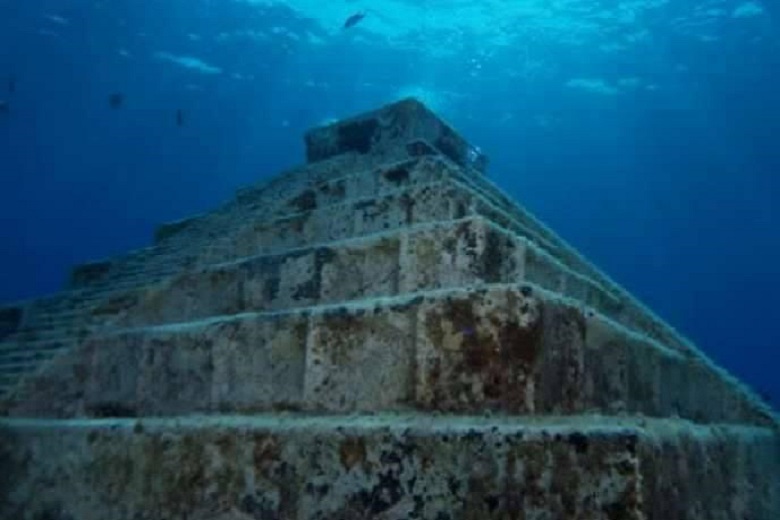
No less amazing pyramids were discovered in 1985 near the small Japanese island of Yonaguni. One of the local hotel owners, photographing the beauty of the sea depths for tourists, saw a huge mass of stone. The man reported his find to the authorities, after which scientists began to investigate the strange object.
It turned out that stone structures stretch along the entire coast of the island. The central object is something like a stepped pyramid. The architecture of the building is very similar to that of the ancient American Indians.
Professor Masaaki Kimura of Okinawa University was particularly interested in a stone fence found in the depths of the sea. It turned out that part of it was made of limestone, a rock not found in these parts. In favor of the fact that all the constructions are not created by nature, but by man, says the presence of even round holes in the pyramids and traces of welding works, not to mention the amazing symmetry of all the constructions. Even a stone sculpture depicting a certain deity with long arms was found.
A colleague of the professor, Robert Schoch, at first rejected the version about the man-made origin of objects, but after familiarizing himself with Kimura’s arguments, he changed his mind. According to his assumptions, all stone blocks were created by nature, and ancient people
Tools of labor, drilled stones, and tables with some signs resembling letters were found near the buildings. According to the assumption of Professor Kimura, the ancient sunken city is about 5 thousand years old. Interestingly, the island of Yonaguni itself resembles a compass needle in shape.
Pyramids in Fuxian waters
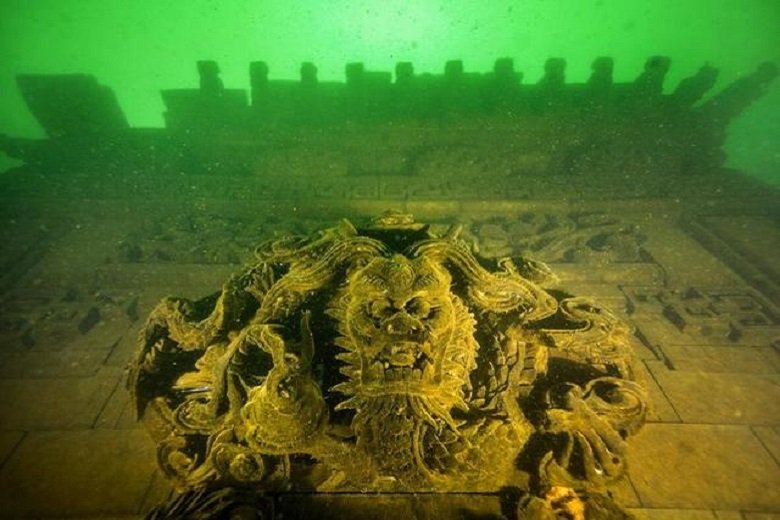
Something clearly resembling a pyramid has also been discovered in China. Eighteen years ago, in the lake Fuxian, at a depth of several tens of meters, scuba divers saw the ruins of a stepped structure 19 m high and 90 m wide.
The structure was made up of five stone blocks. Only the lower part of the structure, which consists of limestone, is preserved. Chinese scientists from Kunming University Center in Yunnan Province and their Russian colleagues conducted a sonar survey. It showed that in addition to this pyramid in lake Fuxian, there are other similar structures, only smaller, and the first pyramid found is located in the center of this group of structures.
The whole complex is very similar to the city that gives reason to put forward the version about some ancient civilization that once existed here. However, near the pyramid were not found objects which could belong to people. If they were found, it would be easier to solve the mystery of these structures because in the Chinese archival documents, alas, this ancient city is not mentioned either.
The only find is an ancient vessel raised from the bottom of the lake, but, as scientists have determined, it was made at a later time than the presumed age of the underwater pyramid. This means that the vessel fell to the bottom of the lake after the flooding of the ancient city and has nothing to do with the case.
Pyramid in Israel
In Israel, at the bottom of Lake Kinneret, which is also called the Sea of Galilee, a mysterious stone structure was also discovered. It is conical in shape and consists of basalt boulders with a total weight of several tens of tons. The exact age of the pyramid has not yet been determined, but it is known that it is at least 2 thousand years old.
According to one version, the structure could be a fish farm – archaeologists encountered similar structures near the lake. However, the pyramid at the bottom of the lake is much larger than these farms and still differs. According to another version, the building could be an object for some ancient cult or a burial place.
But some skeptics draw attention to the fact that the study results did not reveal any exact symmetry in the basalt boulders lying on top of each other. This means that the Israeli “pyramid” could have been created not by man but by nature.
Scientists are still wondering whether all the finds found in different parts of the planet are related to each other or whether each of them is the remains of a separate civilization. So far, there is too little data on the mysterious pyramids to put together.




